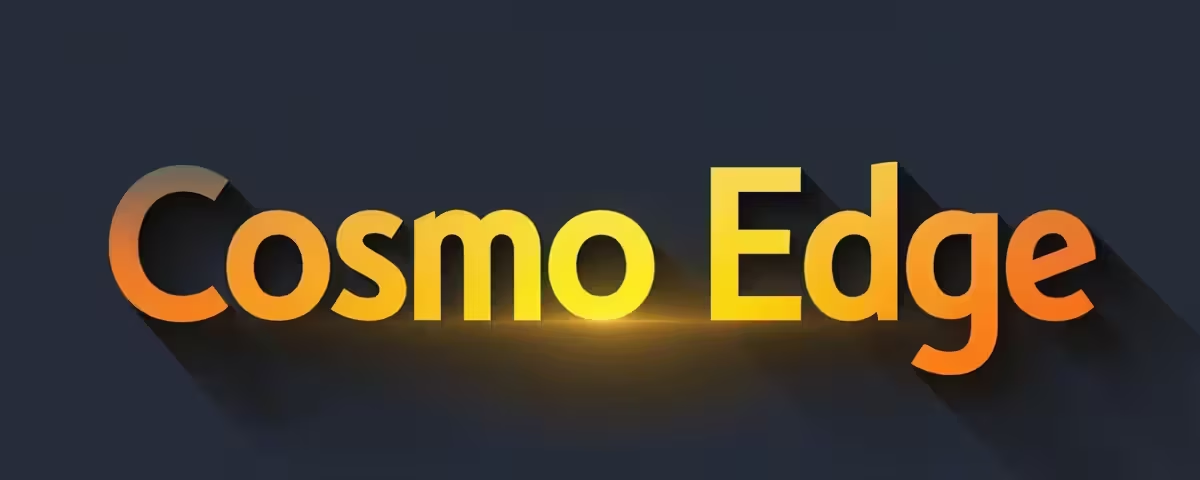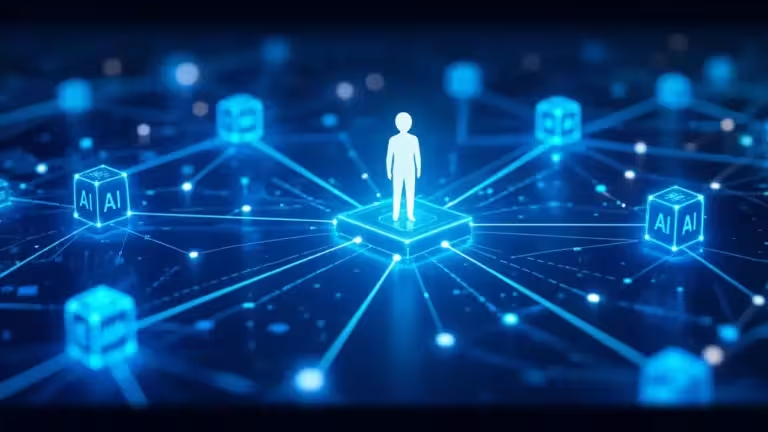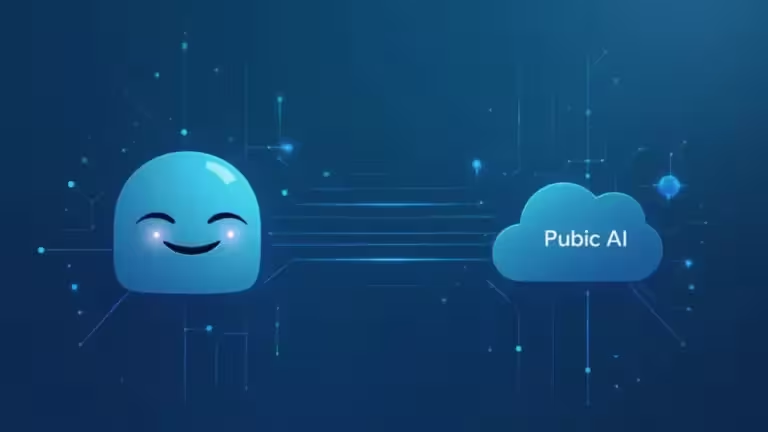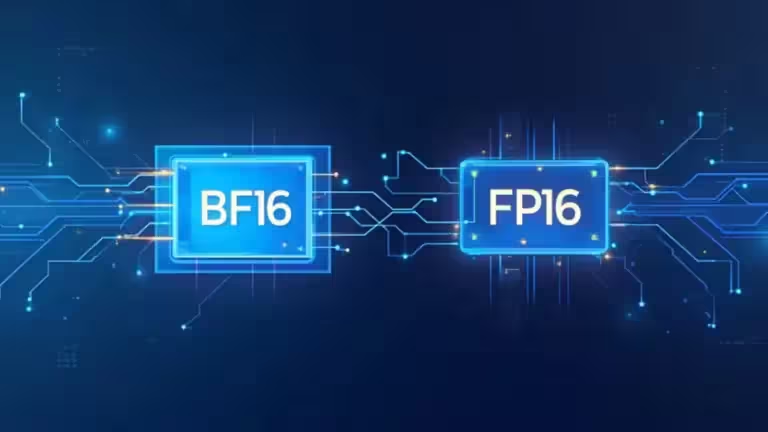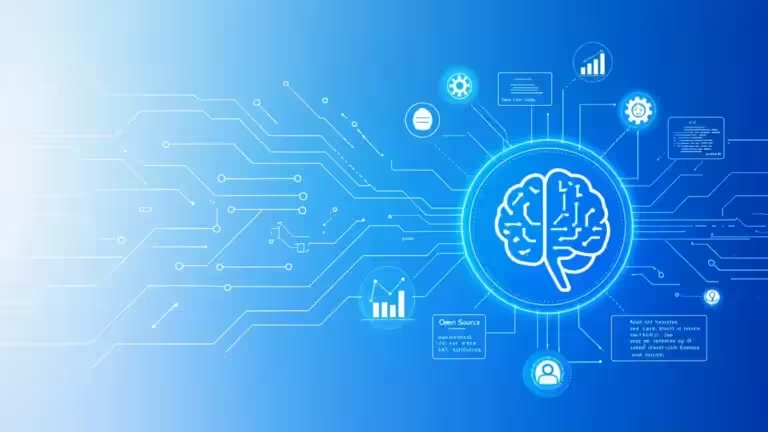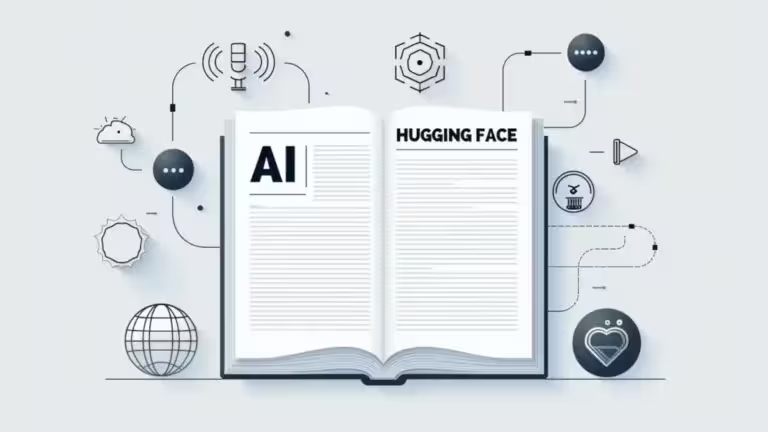Open Source News October 2025: AI, Frameworks, and Innovations
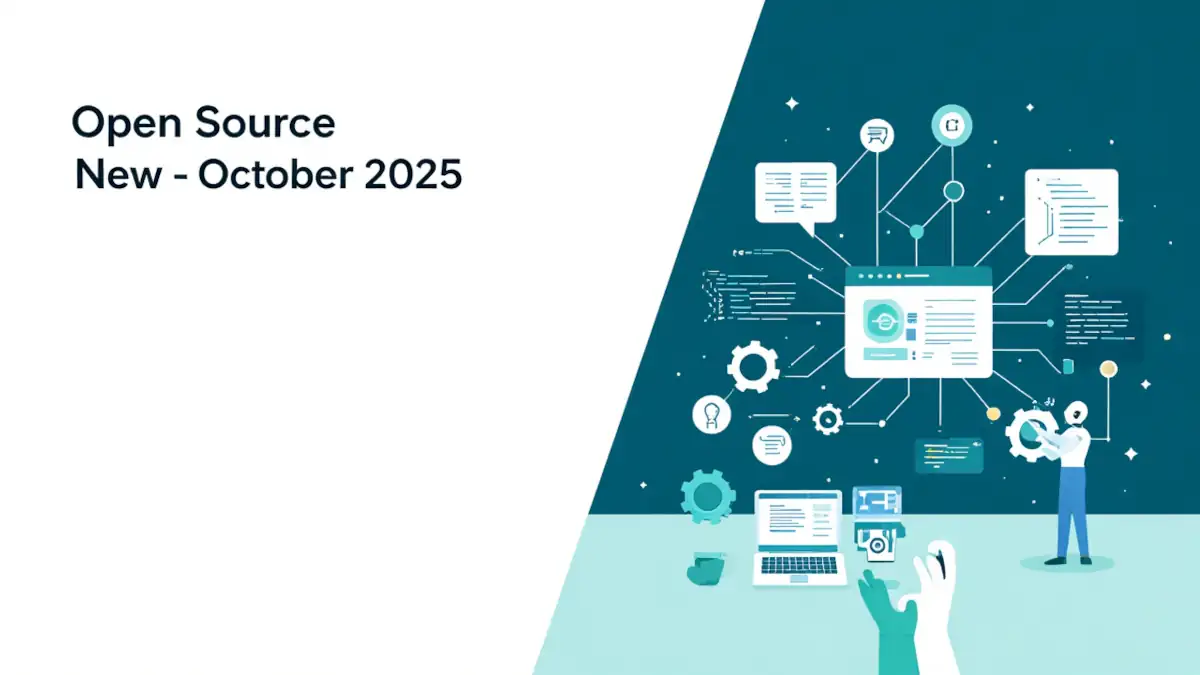
October 2025 will be remembered as a turning point for the open source ecosystem. Between spectacular advances in open source artificial intelligence, the creation of new foundations, and major programming language updates, the development landscape has been reshaped. Open source is now more than ever a driver of innovation, powered by global collaboration among researchers, companies, and communities.
As highlighted by the Linux Foundation, the open source ecosystem is experiencing unprecedented momentum, with contributions sharply increasing and projects now structuring entire industries, from the web to robotics. This October saw the birth of the React Foundation, a historic step for one of the world’s most popular frameworks, and the release of Newton, an open source physics simulation engine developed by NVIDIA and DeepMind for robotics.
At the same time, open source artificial intelligence has continued its expansion, with tools such as AgentKit from OpenAI and models like DeepSeek-R1 redefining standards for transparency and performance. Supported by platforms like GitHub and the Linux Foundation, these initiatives confirm that the future of software development lies in open, interoperable, and community-governed architectures.
This article reviews the key announcements, projects, and trends that made October 2025 a decisive month for open source innovation, spanning AI, frameworks, security, and simulation.
Major open source announcements of October 2025
October 2025 confirmed the vitality of the open source ecosystem. Many major initiatives were announced, further consolidating the central role of the Linux Foundation in the governance of open technologies. As noted in the Linux Foundation October 2025 newsletter, the organization supported several high-impact projects, ranging from new foundations to strategic frameworks.
The creation of the React Foundation, officially announced on October 7, is perhaps the most emblematic. This historic transition of React and React Native to an independent foundation supported by Meta, Amazon, Microsoft, and Vercel marks a new phase in open governance for front-end development tools. The goal is clear: ensure collective evolution while preventing dependency on a single company.
Another highlight was the release of the Newton Physics Engine, an open source physics simulation engine developed by NVIDIA, DeepMind, and Disney Research, managed under the Linux Foundation. Presented at the end of September and integrated into Isaac Lab, it delivers unprecedented precision for robotic simulations, crucial for AI agent training. According to The Robot Report, Newton can already simulate complex interactions like walking on uneven terrain or manipulating soft objects, a decisive advantage for humanoid robotics.
Together, these announcements reveal a strong trend: major tech players are opening their strategic tools to the community, building collaborative ecosystems rather than proprietary silos. This momentum is turning open source from a philosophy of sharing into a global lever for innovation and standardization.
React Foundation: Meta’s new open source governance model
The transfer of React and React Native to the React Foundation, officially announced on October 7, 2025, marks a major milestone in the evolution of web development. As stated by the Linux Foundation, the new structure aims to establish neutral, sustainable governance for one of the world’s most widely used JavaScript frameworks.
Meta, the original creator of React, decided to hand over project stewardship to guarantee complete independence from a single company. This move answers a long-standing request from the community for more open and transparent governance. Founding members include Amazon, Microsoft, Vercel, Callstack, Expo, and Software Mansion, all deeply involved in the React ecosystem.
According to React.dev, this shift will accelerate technical decision-making, improve transparency, and encourage broader contributions. The foundation will adopt a governance model inspired by other Linux Foundation projects such as Node.js and Kubernetes.
This independence comes at a critical time, as React continues to dominate global front-end development with mature tooling like Next.js and Expo. For companies, the foundation ensures long-term stability, while for developers, it strengthens trust in a truly community-driven project. As Cristian Sifuentes on Dev.to put it, this transition opens “a new era of open collaboration” in the world of web frameworks.
With the React Foundation, open source gains institutional strength capable of standing up to proprietary models and sustaining the rapid evolution of modern web development.
Newton Physics Engine: open source simulation for AI and robotics
The other major announcement in October 2025 came from the fields of simulation and robotics. NVIDIA, Google DeepMind, and Disney Research unveiled Newton, a GPU-accelerated open source physics engine now administered by the Linux Foundation. Designed for AI and robotic research, Newton integrates directly with Isaac Lab and relies on NVIDIA Warp and OpenUSD technologies, as detailed by NVIDIA.
The engine simulates complex environments where robots learn to move, manipulate, and interact under realistic conditions. As reported by The Robot Report, Newton offers high precision for scenarios such as walking on irregular terrain, grasping deformable objects, and coordinating multiple agents. This physical fidelity is essential to transferring skills learned in simulation to the real world, a major challenge in robotics.
Newton’s goal is clear: to democratize high-fidelity robotic simulation and enable researchers to experiment without relying on proprietary tools. The Linux Foundation plays a key role in ensuring open governance and long-term community-driven development.
This initiative fits into a broader trend: the convergence between open source AI and open source robotics. Thanks to projects like Newton, developers can now train reinforcement learning models in realistic simulated environments, while sharing tools across labs and reducing compute costs. As EE News Europe notes, Newton represents a decisive step toward open standardization of physics engines, a crucial condition for progress in integrated AI and robotics.
Open source languages and runtimes: Python 3.14 and Node.js 24 take center stage
October 2025 was also an important month for two pillars of open source development: Python and Node.js. Both languages, used by millions of developers, released major updates that improve performance and broaden their use cases.
On October 7, 2025, the Python Software Foundation published Python 3.14.0, a historic version introducing official support for the no-GIL (free-threaded) mode, finally allowing full multithreading on multiple cores. As described by Real Python, this breakthrough removes one of Python’s oldest limitations, paving the way for massively concurrent applications without relying on multiprocessing.
Other highlights include template string literals (t-strings) via PEP 750, improved handling of deferred annotations (PEP 649), multiple subinterpreters (PEP 734), and a new compression.zstd module for Zstandard compression. As noted by Hugo van Kemenade, Python 3.14 also includes an experimental JIT compiler for Windows and macOS and official Android binaries, extending its adaptability.
In the JavaScript ecosystem, Node.js 24 entered LTS (Long-Term Support) in October. Initially launched in May, this even-numbered release will receive support until April 2028. It brings improvements in stability, security, and memory management, as well as enhanced diagnostic tools. According to Red Hat, this version reinforces Node.js reliability in production environments, which is essential for modern full-stack applications.
Together, Python 3.14 and Node.js 24 reflect the maturity and continued innovation of open source languages. Python evolves as a core language for AI and data science, while Node.js strengthens its dominance in web and cloud architectures. Both confirm the vitality of open source development in 2025, where performance, stability, and openness coexist.
Open source AI tools and frameworks: AgentKit, GitHub Spark, and DeepSeek-R1
Open source artificial intelligence dominated October 2025 with three major projects redefining how developers build, test, and deploy AI agents and models. These releases illustrate the trend of AI democratization, where transparency and accessibility matter as much as raw performance.
On October 5, OpenAI introduced AgentKit, a complete framework for building, managing, and deploying AI agents. According to OpenAI, the platform includes several components: a visual Agent Builder, a Connector Registry for linking external services, and ChatKit for embedding conversational interfaces into web apps. AgentKit also provides optimization and governance tools, including Reinforcement Fine Tuning (RFT) and version tracking for agents. As noted by Skywork.ai, companies like Ramp have already automated complex workflows in just a few hours with this framework.
Another key release, GitHub Spark, launched in public preview for Copilot Enterprise users at the end of September and continued to gain traction in October. The tool turns natural language descriptions into full-stack functional applications with built-in GitHub authentication and native AI integration. As described on the GitHub blog, Spark enables users to prototype, deploy, and synchronize a project with GitHub Codespaces in one click. It is already emerging as a reference for developers combining AI, backend automation, and app generation.
Finally, DeepSeek-R1, released in January 2025 but still trending this month, remains the symbol of open source AI’s rise. This reasoning model rivals proprietary systems like OpenAI o1 while being 90 to 95% cheaper, according to VentureBeat. Built on pure reinforcement learning and a Mixture of Experts (MoE) architecture with 37B active parameters across 671B total, it supports a 128K token context window.
These three initiatives represent a major shift: open source AI is becoming as effective as proprietary solutions, providing real tools for building agents, automating workflows, and creating specialized models. AgentKit, Spark, and DeepSeek-R1 together define a new standard of open and transparent AI innovation.
The GitHub ecosystem in 2025: growth, key projects, and open source trends
The year 2025 marks an exceptional acceleration in global open source collaboration on GitHub, now the beating heart of the developer community. According to October data, the platform hosts over 690,000 active repositories with nearly 500 million stars, a 25% increase compared to 2024. These figures, shared by Reddit Programming, highlight both the scale of community engagement and GitHub’s central role as the standard for collaborative software development.
The most popular repositories remain cornerstones of learning and knowledge sharing:
- freeCodeCamp (430,000+ stars) continues to lead programming education.
- build-your-own-x (426,000+ stars) encourages developers to recreate technologies from scratch.
- free-programming-books (372,000+ stars) remains the go-to open educational archive.
- developer-roadmap (340,000+ stars) guides developers through up-to-date learning paths.
Beyond these staples, new categories are growing fast. Workflow automation tools like n8n, alternative open source backends such as Supabase (72,000+ stars), and low-code productivity platforms like AppFlowy (64,000+ stars) attract a new wave of contributors. According to NoCodeBase, these projects signal a shift in open source philosophy toward practical, product-oriented approaches.
This diversification also reflects the rise of AI-assisted development. Open source tools that combine LLM models, DevOps automation, and infrastructure orchestration are multiplying, making software creation faster and more accessible. As noted by the Linux Foundation, the convergence of open source, AI, and cloud computing defines a new era: augmented collaboration, where every commit contributes to a growing collective intelligence.
Open source security and infrastructure: major progress in October 2025
October was not only about innovation but also significant advances in open source security. GitHub, the Linux Foundation, and major industry players strengthened their initiatives to secure dependencies, prevent supply chain attacks, and prepare for post-quantum threats.
GitHub deployed a hybrid post-quantum SSH key exchange to address store-now, decrypt-later risks. As detailed in the GitHub Enterprise Content Roundup, this method combines classical and quantum-resistant algorithms, offering enhanced security without breaking compatibility.
In parallel, GitHub introduced a major npm registry update after the “Shai-Hulud” worm compromised more than 500 JavaScript packages. The GitHub security team revamped token management and multi-factor authentication to isolate dependencies and reduce the risk of cascading attacks.
Another improvement comes from Dependabot, GitHub’s built-in vulnerability monitoring tool, which now supports context-aware prioritization. This upgrade focuses alerts on dependencies actually running in production, cutting noise and enabling faster fixes for critical issues.
These developments reflect a maturing open source software supply chain. Security tools are becoming smarter, proactive, and integrated into the CI/CD workflow. As Help Net Security observes, open source cybersecurity is no longer a secondary concern: it is now a core part of the development lifecycle, alongside performance and code quality.
2026 outlook: toward more autonomous open source AI
Based on the breakthroughs seen in October 2025, the year ahead points to a new phase for open source AI and collaborative frameworks. The convergence of intelligent models, open infrastructures, and unified development environments is transforming how applications are built and deployed.
In 2026, we can expect the rise of a new generation of multimodal open source models, capable of processing text, images, audio, and video simultaneously. Analysts cited by O’Reilly Radar predict that lighter, modular architectures will soon allow local execution of tasks that were once exclusive to the cloud. The growing integration of NPUs in consumer PCs and servers is paving the way for decentralized AI.
Frameworks for AI agents, such as AgentKit and LangGraph, are also expected to evolve toward interoperable ecosystems, where agents collaborate across platforms and applications. This approach enables advanced automation scenarios in which AI agents rely on open source models and standardized connectors.
Finally, the low-code and no-code open source movement, illustrated by the rapid growth of AppFlowy and NocoBase, will empower a broader audience of creators. These tools allow non-technical users to build and deploy AI-powered applications without deep coding expertise.
In short, 2026 is shaping up to be the year of shared intelligence, where the boundaries between academia, enterprise, and the open source community fade in favor of global co-creation. Openness, transparency, and software sovereignty will define this new digital evolution.
Summary: October 2025, a milestone for the open source ecosystem
October 2025 confirmed that open source has become much more than a development model: it is now a structural force driving the entire tech industry. From the creation of the React Foundation to the release of the Newton Physics Engine, from the evolution of Python 3.14 and Node.js 24 to the breakthroughs of DeepSeek-R1 and AgentKit, every announcement reflects a global move toward more open, collaborative, and intelligent tools.
As the Linux Foundation notes, this openness comes with increasing professionalism: projects are better governed, ecosystems are more secure, and community participation has reached new heights. Open source is no longer limited to developers—it now drives research in AI, robotics simulation, and critical software infrastructure.
October 2025 will be remembered as a defining moment, proving that open source can rival proprietary solutions in innovation, efficiency, and security while preserving the freedom and transparency that have always been its greatest strengths.
Your comments enrich our articles, so don’t hesitate to share your thoughts! Sharing on social media helps us a lot. Thank you for your support!
